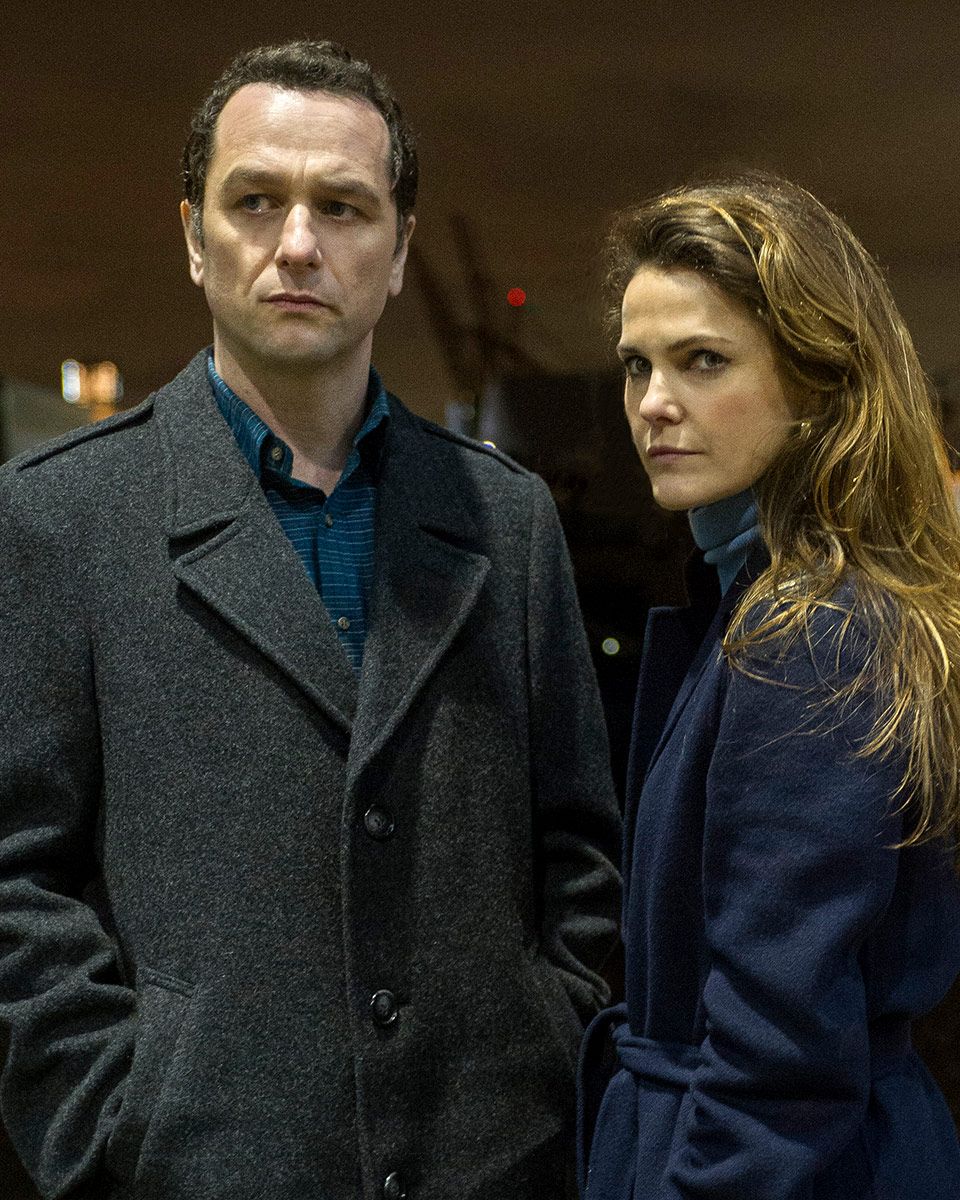The final episode of The Americans does just about everything an Americans fan could want. It provides a conclusive, tragic ending for our now-exposed Russian spies, Philip and Elizabeth Jennings. It leaves certain questions unanswered, which was very much in keeping with the show’s ethos. (Is Renee working for the Russians? We’ll never know!) And it does something that few series manage in their last chapter: It delivered genuine surprises. (Stan just let the Jennings go? Paige got off the train?!)
Ahead of the finale, Vulture spoke to the key members of The Americans creative team about how “START” came together. What follows is an oral history of one of the finest finales of the modern TV era.
The Beginning of the End
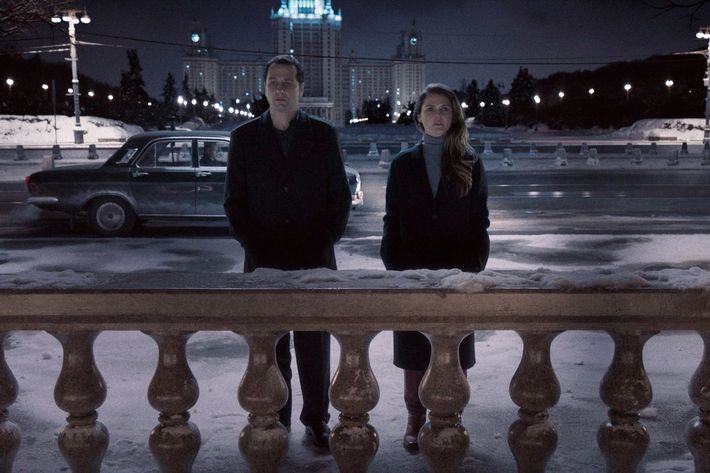
Joel Fields (co-showrunner): We don’t remember now whether [we had the idea for the finale] at the end of [season] one, or beginning of two.
Joe Weisberg (co-showrunner and series creator): [We knew] just the first part. We got the idea that Philip and Elizabeth were going to go back with one of the kids, or both of the kids.
Fields: Or neither of the kids. I remember thinking it was neither. We certainly played with all three of those options over the course of all the intervening seasons.
Weisberg: We had no idea how we were going to get there, and we didn’t know the other pieces that you see in the finale. In a way, we consider it a minor miracle that we ended up sticking with that ending. We did not spend the next four seasons trying to get to that ending. We essentially thought, “Boy, that would be a great ending,” and honestly then forgot about it. When it got to the point to really come up with the ending, we were like, “Hey, that ending still works.”
Keri Russell (Elizabeth Jennings): We were under the understanding that they did have the ending for quite some time, or the idea. How they got from point A to point B, they fleshed out and changed over time, but we knew that they always knew how they were going to end it. They didn’t give us any clues as to how it would end. So when we read it, it was an absolute surprise.
Matthew Rhys (Philip Jennings): I had vague ideas of what might happen, what I’d like to happen. It did involve us going back to Russia. I kind of wondered if it led to that realm and world. But, yeah, that was about as specific as I got.
Weisberg: The story we originally built was that the kids would stay. And then it became increasingly apparent Paige was going to go with them because she believed in all this, and some part of her would understand what that meant. Who would there be a reason to leave? It would be Henry. That story was an emotionally logical story to tell, but I don’t think any of that came together until we started breaking the final season.
Holly Taylor (Paige Jennings): I was really shocked and speechless when I first read it. I couldn’t really process what I had just read, but I loved the ending. The more I thought about it, the more I loved it and the more sad I thought it was.
Russell: [Matthew and I] do often read scripts and go, “Oh, my gosh. Wait until you read this one thing. It’s really funny.” Or we’ll go, “Oh, just tell me. Just tell me, I’m going to read it later,” and we’ll paraphrase it for each other all the time. But, in this case, we both have really specific stories about how we read [the finale].
I was a little behind in reading the episodes and I was shooting one day, north of the city. I had a big chunk of break before I had to go back to my night work, so I had, like, four hours off. I took the scripts eight, nine, and ten — which I had not yet read — and I pulled into this super-fancy restaurant. I sat at the bar and ordered a giant glass of really nice red wine. I just read them all in order, sat and cried and tried to pretend that I wasn’t crying, just covering my face. It just happened. It was so incredible to read them like that. It was this little secret space in which to read them in a private way.
Rhys: I was on a train to Washington, D.C. I just read it then, and I wept my way there with a businesswoman looking at me. I was on my way to do the premiere of The Post, the Spielberg film. I had [my script] wrapped up. No one could see the cover.
Chris Long (executive producer, “START” director): Going into this one was incredibly tricky. Everything is the last and the end and there’s never a chance to fix anything else after this. You stare at it and you go, “Oh my God, this is going to be the legacy of the show.” Then you want to forget all that and just do your job and tell that beautiful story.
The Confrontation in the Parking Garage
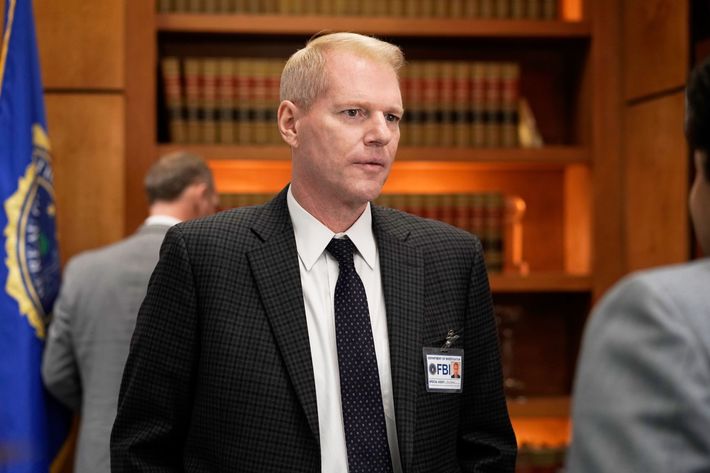
Weisberg: That [parking garage] scene, we knew all along exactly how it would play out. As we’re finishing [season] four, that started to take shape, although it went through many, many revisions in order to get to what we finally shot. There were times that we tried some more action in that scene for size, but the truth is that didn’t work. It was pretty obvious to us that Stan is a good enough counterintelligence agent that he’s not going to let two people that he’s behind ever get the drop on him.
Fields: We avoided writing [that scene] for the longest time. We wrote a lot of the rest of the script around it, and then, if I remember, we finally sat down, and we just said, “Let’s write it. Let’s just write a version of it.” We wound up with a first draft that needed a lot of work. And then we proceeded to rewrite it for several months.
Weisberg: I would probably call that the hardest scene we ever wrote on the show, and the one that we spent the most time on. I don’t think you could point to any other scene in The Americans that took several months to write. We’d leave it alone for a couple of weeks, we would come back to it, rewrite it, leave it alone for a couple of weeks. We never had a scene that really needed that. Part of it was, we would just feel we weren’t there yet. We had to accomplish something enormous. Essentially, we had to make it believable that Stan let them go. There have been six seasons of this relationship, and this friendship building up, and it all had to crash down in this one scene.
Fields: To tell the truth, Joe and I were pretty nervous until we saw the read-through. At which point we knew we would be okay.
Rhys: There’s no hiding in a scene like that. Also, your vanity kicks in. You want to do a good job, you want the respect of your peers in those moments, among the other greater reasons such as serving the story. Yeah, everyone turned up ready to go. I was brimming and ready to go at the rehearsal.
Fields: I remember looking at Joe after that scene in the read-through and seeing a look of beyond relief. We felt good. I mean, we felt great. We were really wondering, “How much are we going to have to dig back into the scene?” At this read-through, we knew we were okay in the actors and the directors. That’s how you want to feel.
Noah Emmerich (Stan Beeman): It was unprecedented in that we had been building toward this scene for basically six years. The idea that we’ve been doing this show for so many years — having the audience with us in a weird way, obviously — the expectations and the curiosity around what this was going to be were tremendous and resonant. It had a weight to it and an expectation attached to it that I had never experienced before.
Taylor: When I got the [shooting] schedule the night before, I looked at it and I was like, “Oh, we’re going to spend the entire day doing that scene.” There’s no way they’re going to be able to fit in much else.
Long: It was the only scene we shot that day. Including rehearsing it and shooting it and executing everything that we needed to get, it took about 13 hours to shoot. We shut off [this parking garage in Manhattan] and didn’t let the traffic in there.
Emmerich: Every take was ten minutes long from all the different angles. But it had a lot of energy around it. It was an exciting moment. Rarely have you worked that hard to earn a scene, you know? I mean, it’s a painful scene. It’s a painful moment for Stan, certainly, and it was my last scene with Matthew and Keri, in terms of production schedules, so it was a doubly resonant moment. It was the end of our story line and the end of our work together.
Rhys: It’s six years of everyone going, “When’s Stan going to catch them?” You know? [Sten letting them go] is an enormous decision that happens in an incredibly fleeting moment. So yeah, I was surprised, given the amount of betrayal that Stan feels within that scene. You know, what makes any television interesting is conflict. You’re conflicted in that moment. That’s what’s amazing. Beyond this, it’s, you know, finales need shocks. And that is a shock.
Emmerich: I thought it made sense. Stan’s journey throughout the last couple of seasons has been away from the spy game. At the beginning of this year, he’s transferred out of counterintelligence, he’s working in the criminal division of the FBI. He found the human cost of the spy game to be too much to bear, with too little fruit to show for the cost. Too little reward for the intensity and the cost of the work, in a similar way to Philip’s journey away from the spy game. They funnily mirror each other in terms of their lack of enthusiasm and loss of interest in that world and what it all translates to in reality. The ends didn’t seem to justify the means.
The humanity that he confronts it with — in a way he’s not able to do his job in terms of arresting them, in terms of really ruining their lives — he’s just frozen in that moment and ultimately decides that he can’t do the other. It’s a real moment of grace and humanity that supersedes the political. Which is at the heart of our show.
Fields: When we got to set and they were about to film, we started talking to Chris Long about the fact that the exact moment [when Stan changes his mind] doesn’t exist, and that the audience needs a moment to realize what’s happening. There isn’t a moment that goes click in Stan’s brain, in our minds.
Emmerich: I do think the resonance of Henry is definitely explosive for Stan. He’s really close to him, he really is connected to him, and he’s a completely innocent bystander child. That has a big impact on Stan, for sure. It’d be hard to identify a singular turning point, but that has a real impact.
Rhys: It’s Philip’s charm that wins him over, once again. [Russell starts laughing.] What I loved about that scene was that Stan has clearly been in love with Philip for so long.
Russell: That’s what Joe and Joel have done so well over the past two years, especially — there is no clean-cut bad guy. There is no clean-cut guy who’s right. That’s what I love about Stan letting them go. He doesn’t want to let them go, but he can’t not. Because he cares about them. He knows outside of all of these things that we do for our work, we’re also just trying to raise this family, and he cares about us on some other, deep level. And he has to let us go.
Fields: There’s that moment when the car pulls past and Stan steps aside. It was not a moment written into the script. That was a moment that Chris came up with on-set, so that we could see [Stan] wasn’t going to do it.
Long: That was a moment we added when we were in there. There was only one way to get out of the parking lot, so they had to drive by Stan. Noah just stood there for a moment and it was like, “Oh my God, this is amazing.”
Fields: The fact that Chris Long was able to direct [this scene] in such a simple and honest way made all the difference. It’s nerve-wracking enough to present, what is it, a 12-minute scene with no action and just dialogue? And then to have a director who’s confident enough to essentially do it with almost no blocking, no camera moves, no trickery? It was just really a great opportunity for everything to come together.
Renee the Spy (or Not?)
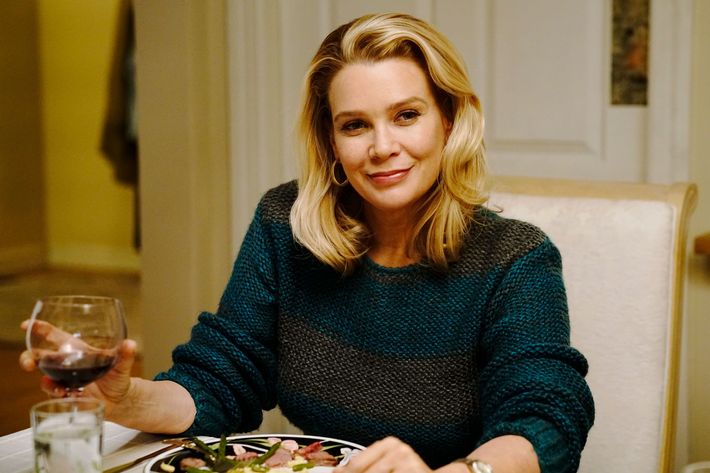
Laurie Holden (Renee): Renee serves a very specific function in the narrative. Her purpose has been to stir up intrigue. Whether or not she’s a spy, that’s for the audience to decide. I know, but I will never tell. I was told at the very beginning. Whether or not that changed, or went to a different incarnation, that’s a whole other story. But [Joe and Joel] are very smart writers. She was there for a reason. When the audience goes back and rewatches these episodes, they will be able to find clues which will better inform them as to who she really was.
Emmerich: I have my thoughts, but I’d hate to pollute the waters for other people’s thoughts. I don’t feel I’m extra qualified beyond anybody else to weigh in, although I somehow would have more weight if I said something. But I do think it’s a tantalizing question. I’m sure some people will be frustrated by it, but you know, that’s the way life is. It doesn’t get tied up in neat bows. As Nina said to Stan back in season two, “You Americans see everything in black and white, but the world is really much more gray.” This is a really gray area. It feels organic and real, and I love that they did that.
Fields: That unanswered question was one that Philip didn’t have the answer to, Elizabeth didn’t have the answer to, and Stan wouldn’t have the answer to. The only way to answer that would have been to try to create some additional plots from outside the story. And what was most interesting to us was how the characters would deal with what they didn’t know. The fact that Philip decides to share that piece of information with his friend, and leave him with that unpinned grenade, seemed right to us.
The Final Disguises
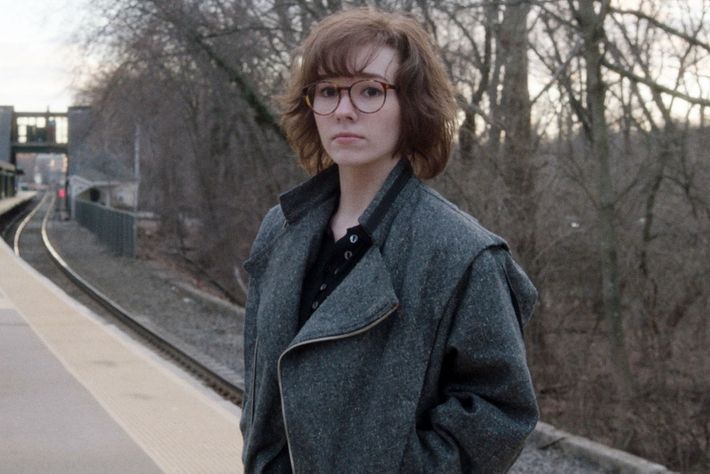
Katie Irish (costume designer): With Keri and Matthew, it was much, I don’t want to say easier, but it was a much more straightforward process because we’ve done all of the disguises for them. We knew what worked, what didn’t, and what took them to a place that was unrecognizable. But we had never disguised Holly. She’d done some missions, but it was always a hat and glasses. She’d never had a wig, and we’d never been trying to go full different persona with her. We had four fittings before we finally landed on something that stuck for what that look was going to be…
Taylor: I’ve never gotten to do that before and I’ve always wanted to. Once I did it, I realized why I probably shouldn’t have wanted to do it so much. It was such a long process, I was like, I can’t even imagine having to do this multiple times per episode. So after I did that, I was like okay, this is definitely the best-case scenario. I got to try it once and then that was it.
Irish: We tried a variety of things and the biggest directive there was that it needs to be as anti-Paige as we can get it, without being comedy.
Taylor: Paige has never been the most hip when it comes to fashion so she wanted the disguise to be a little more stereotypical 1980s. At the same time, it’s a disguise, so it has to blend in and not be super bright colors and crazy hair. Finding that balance — there was a lot of changing around and switching back and forth between outfits and wigs and glasses. What they landed on was really perfect.
Irish: The other thing we are interested in doing with the three of them is not necessarily making them look like they were travel companions, but also not that they couldn’t have been traveling together. So they needed to not look like the happy, all-American family that are all going on a train together. But also if they did happen to be sitting together you wouldn’t say, Oh that doesn’t make a lot of sense.
That Phone Call With Henry
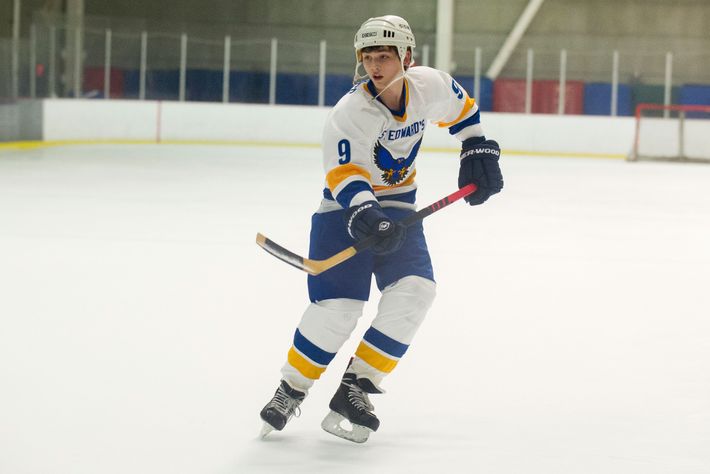
Long: Everybody’s got their scene in this show that really speaks to them emotionally. That was the scene, when I read the script, that made me cry. It really affected me so brutally, strongly. So I was always worried about shooting it because I knew it was going to be an emotional roller-coaster to do it.
Taylor: The last scene I shot for the whole entire series was when we call Henry. That was a really sad scene to shoot and there ended up being a surprise blizzard in the middle of shooting it.
Long: We were shooting it at, like, three o’clock in the morning out in Staten Island. It was freezing cold and we got most people’s close-ups. We turned around to get Matthew’s close-up, and this blizzard came in.
Rhys: It was an average shooting day for The Americans, really. Four thirty in the morning, there’s a snowstorm, you’re trying to do something incredibly emotional.
Long: We were shooting and it just kept whiting out the frame. You couldn’t see it so we had to stop and build this sort of tent around Matthew to shoot that. The fact that Matthew Rhys could give that performance in a blizzard is unbelievable to me.
Rhys: For the last day of shooting, all of those externals made it incredibly unsentimental. When they said, “Wrap,” everyone just ran to get warm.
Taylor: It was absolutely freezing. We had hand and body warmers everywhere: in our tiny little coats and our wigs. Nobody really did a big good-bye. It was just like, Okay, let’s all go home, we’ll see each other at the premiere party. Everyone just wanted to go to bed.
The Train Scene
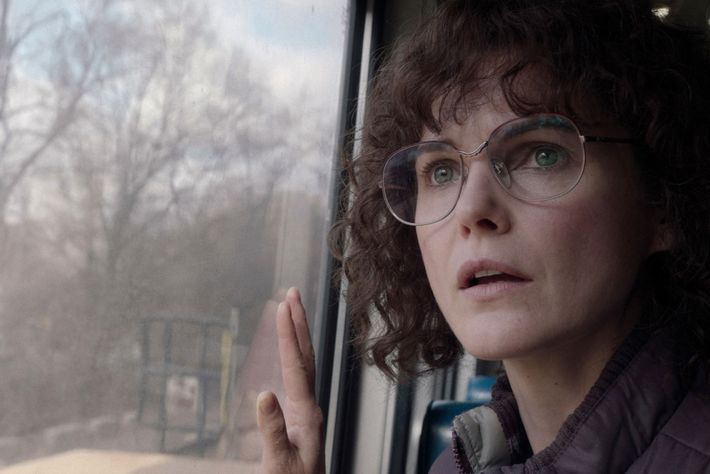
Weisberg: I don’t think we ever wrote a script where she stayed on that train, but we had a [version of the] story where she was on it. And it wasn’t working for us. That’s how all stories evolve. They work, or they don’t work, and you keep going. My memory is that when we took her off that train, that was the last significant piece of story we ever broke on this show. When we took her off that train, we had the final ending of The Americans, the whole finale episode, the whole series fell into place emotionally, and we were done.
Fields: The truth is that departure of Paige, exactly how it was going to turn out, we didn’t know. We certainly didn’t know it was going to be on a train. We had all sorts of different iterations of that final sequence until we got to that one.
Weisberg: There’s no vehicle that [the Jennings] didn’t, at one point or another, take out of the United States. They were in cars. They were in airplanes. They may have went up in a hot air balloon.
Fields: Never a hot air balloon, Joe.
Taylor: We had the whole train to ourselves on a Sunday. It was the first Sunday shoot that I’ve ever done, and it was a really long day because every time they had to reset the train and move it back, the train operator had to call the main person in charge of the entire platform.
Long: It was one of the most frustrating days of my life because every time we needed to move the train, we’d need a conductor’s permission. It was driving me absolutely crazy because we only had one day to shoot the sequence and it was one very daylight-dependent day, because of the price of getting a train and moving it out from Grand Central to Tuckahoe. We needed a train to pull in and then pull out and leave Holly on the platform. It had to be done on a real train practically, unlike a lot of TV shows [where] it is obviously done with a green screen. We couldn’t do it with a green screen because of that process.
Taylor: They had Keri placed in specific spots on the train and then they put a piece of tape on the outside of the train so I would know where to find her, because it’s kind of hard to see through the windows. I was just standing out on the platform, sitting still so they wouldn’t catch me moving. Then, as the train would pass by, the camera would pick me up as I went along and follow me as if that’s what Keri’s perspective was.
Russell: It’s difficult because you read a scene like that, and it’s so moving. But it’s one of those things that has to be moving in a second. You have to catch that moment really quickly. It took so many people to make the train go back and forth, you only had a few shots at it. There’s no, “Let me work up to it for ten minutes.” You have to do it right then, to get [Holly] in the shot, to get us in the shot. There were a lot of outside factors happening that were distracting. It wasn’t the easiest scene to shoot.
Long: If you look at the end part — where the train pulls away and it leaves Holly on the platform — you see how narrow that platform is. There was just the camera operator, the camera assistant, one grip, me, and Holly on the platform. Everybody else was on the train, knowing nothing that was going on. There were just five of us on that platform, shooting the last piece of Holly. It was very intimate that way to do it. But also there was no room to do it and we were losing the light and it was such an important beat. Holly was amazing. Under so much pressure to play that moment and play exactly right where we walk the line emotionally, she did it again and again, just spot-on.
Taylor: Her parents have just lied to her so much, what kind of relationship would she have with them? How much can she trust whatever they say, and how on Earth could they leave their own kid behind? There’s so many factors where she just feels betrayed by them. As much as her relationship with Elizabeth has gotten better this season, in the previous episode when she calls her out on sleeping with a kid that she met at that party, how could she ever trust her again? She had that problem before, when she first found out that they were spies. She was like, “How can I trust you guys?” They finally built that trust back up, and now it’s just been torn back down again.
I don’t think she has a plan. She just knows this is what she has to do right now, and if she gets off the train, there’s no way Elizabeth and Philip can hop off and come back for her. She knows that it’s a final moment, but the only thing she has in her mind is to protect Henry somehow. And she doesn’t even know how she’s going to be able to do that.
Long: We didn’t know in advance what song was going to go there. We knew it was going to be a very long, tricky montage, so we knew it was going to be incredibly difficult to get that music right. We had several ideas before we started shooting. One of the most famous songs we tried was “American Pie.” We had it in there for a long time.
Amanda Krieg Thomas (co-music supervisor): “American Pie” lived in there for a while. I can’t remember who, but it was rubbing someone not quite right. We weren’t really sure about it. It wasn’t ‘80s. Myself and [co-music supervisor] P.J. Bloom, we both really felt that having it be of that period was really important. There were a couple of Pink Floyd songs that were front-runners, and then another U2 song [“Mothers of the Disappeared”] was a front runner. [“With or Without You”] hit that emotional beat of Paige and seeing that moment, and having that hit Elizabeth and Philip.
Long: In some ways, that “American Pie” song overwhelms what we were watching. That was the reason why we didn’t go there in the end. That U2 song was released that year and it felt relevant.
Krieg Thomas: “With or Without You” is one of the songs [U2 is] most precious about and most particular about how it’s used and where it’s used. We were very fortunate in that we heard people in their camp were fans of the show. A lot of times when you’re clearing songs like that, you have to fight that battle for an unknown show. We were fortunate. But it was not easy by any means. It was down to the wire, like last day of the mix, chasing down the manager and giving them full-court press. The last possible day it could be cleared, it cleared.
The Dream
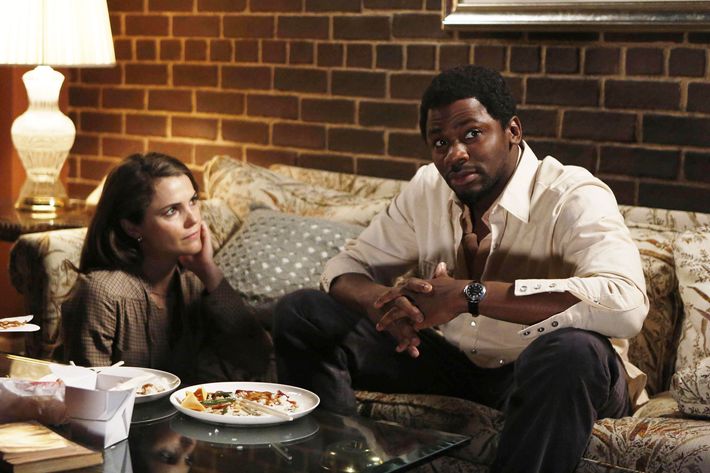
Fields: The Gregory dream on the airplane was something that didn’t come to us until later, but really helped a lot of things fall into place emotionally for us.
Weisberg: We liked that scene. It moves us, which is the main thing. Having them leave in that final journey they take, you don’t want them to be dancing out of the country. It isn’t about a shoot-out. It’s about whatever the emotional shoot-out is for them. So we were really trying to explore what was going to be in her heart, and what’s going to be on her unconscious as she makes this final journey. And, you know, dream sequences are so broad. We’ve only done a couple in the whole six seasons of the show, in part because it’s so easy to fuck them up, and to have them feel false or contrived. It’s just very, very tricky.
We had this whole thing going with the artwork, which felt very true to things that have been going on this season. And then we started to think about, she’s leaving her country, and leaving her kids with her husband — what would her unconscious conjure up for her in that final restless sleep on the airplane? And we hit on this idea [of her] first true love, at a time when she was in love with her husband. And it just rang true to us. It was both sad and not sad. And, in a funny way, affirming of her love for Phillip. Because she’s both letting go of it, but her unconscious is hanging on to it. And because she’s leaving her kids, it’s referring back to when she was pregnant with Paige. She didn’t know if she wanted the kid or not, but other than that, it seemed to hit all those notes.
Fields: Once the Gregory dream came, it came pretty fully formed. We built an entire season where Elizabeth was being triggered by an artist, and I don’t think I’d ever consciously thought about the fact that her first love was an art collector. We’ve got art in a way that she didn’t understand way back then. But it’s good that clearly something is working there on her subconscious.
The Final Scene
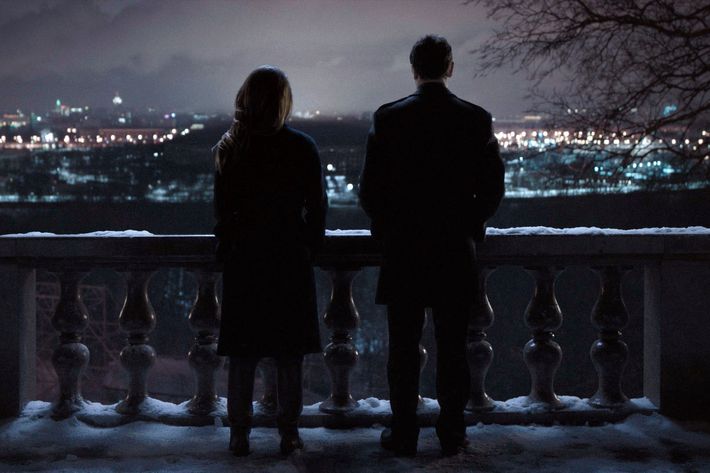
Fields: We wrote [the finale] in order, and that was the last scene we wrote. There was sure a lot of rewriting after.
Weisberg: The fact that they should be together, the mood, and the tone came very easily. And that part isn’t always easy. You’re 75 percent of the way there if you have that, but the 25 percent of what exactly the dialogue is, [that] did not come particularly easy. We didn’t have radically different things they should be talking about, but getting the exact version of this content right, we obsessed over that many, many, many hours.
Long: Some of [the last scene] was shot practically and some of it was shot against a green screen, so when we shot the stuff practically — the bits when they cross the border and then the first time they meet Arkady in that snowy field — that was out in Staten Island. When they start driving the first time was out by Jones Beach. And then we come to the green screen. Jumping from day driving to night driving in Moscow always vaguely concerned me because it was jumping from practical shots to effect shots, but the green-screen shots were really helped by the magical quality of the very first shot that we did at night, which was Arkady’s car driving left to right in Russia.
Long: Sparrow Hills, which is where the final scene takes place, is one of the most famous overviews of the city that you can do. It’s one of the only overviews of the city, actually, because Moscow doesn’t have that many lookout points. It’s a very famous place.
Fields: We had strong instincts that [the last line] would be in Russian, but we were so unsure that we shot it both ways. As soon as we saw Keri deliver it in Russian, we knew.
Weisberg: The truth is Joel and I never even looked at it in English. We never watched the English version. In the history of things that we’ve shot both ways, which has probably been five to seven things over the history of the show, we have never not then looked at both ways. This would be a first.
Fields: I’d say that there is no scene in the history of The Americans that we spent more time working on in the editing room than the final scene of the two of them. We spent just an insane amount of time working on that scene. Part of it was emotional on our end, because it was the last scene, but part of it was we really, really wanted it to be just so.
Taylor: This is definitely the most tragic way that it could have possibly ended. If everybody died, that would have been sad, but this is even worse because they all have to live with this ending and how sad it is. They don’t just get an easy out.
Russell: Joel and Joe, I don’t know if they’ve said these words, but they said them to us. They really wanted a Russian ending. They wanted that melancholic feeling. It wasn’t going to be an American hero ending. They did exactly that. All of the choices ended up at a terrible cost. They’re alive, but they have to live with this terrible truth that their kids are not with them. It’s devastating and satisfying. They did have to pay for what they’ve done.
Rhys: They have this enormous, great grief. In a way, the grief is almost worse than death. You can mourn something that can never be again, but to know that your kids are alive and there’s nothing you can do about it — or far worse, that they will resent you — I just don’t know how you come to terms with it. I like the fact that there was payment for what they did. In the best-case scenario, if all four went to Russia, Henry would still be devastated. So I love this ending. It was very, very apt.
Interviews have been edited and condensed. Additional reporting by Maria Elena Fernandez.


